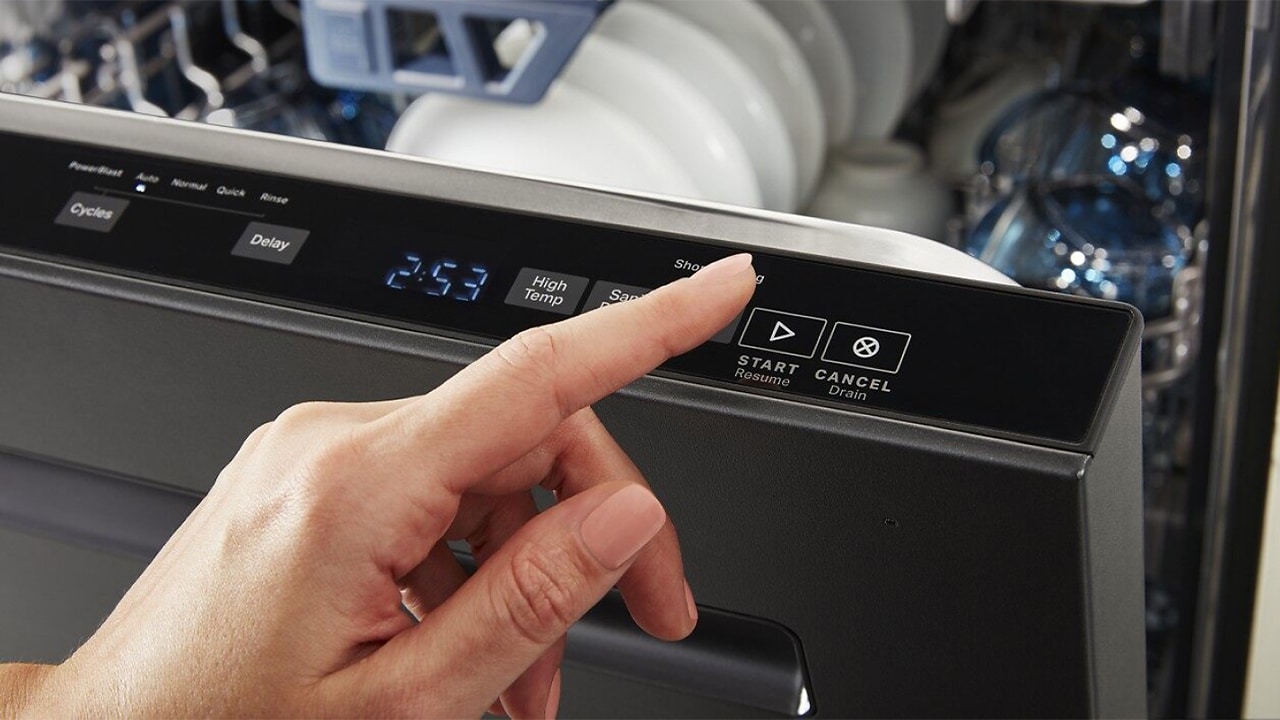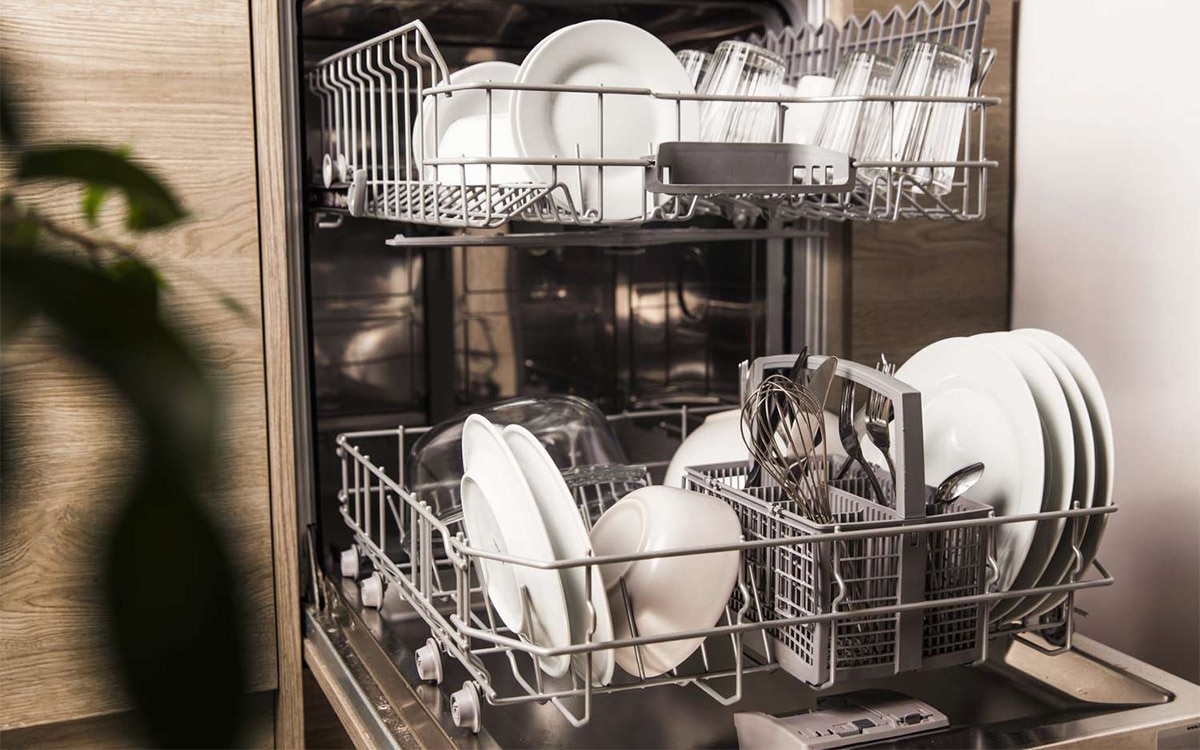But keeping track of the hundreds of tips and tricks for dishwasher use can be challenging enough. What are three simple rules you can rely on whenever you load up your dishwasher?
We’ve combed through the internet to find three essential rules that will help to keep your dishwasher in tip-top shape and help you to make use of every drop of water. Want to know what they are? Read on down below to find out!
1. Fill It Up (But Not Too Much!)
Loading up your dishwasher efficiently is one of the most important things you can do. By ensuring you make use of every inch of space, not a single drop of water is put to waste.
If you were to simply set your dishwasher running while only half full, it would still use the same amount of water as it would use when packed to the brim. Over time, this would prove an incredible waste of water and electricity. You would need to perform double the number of cycles, effectively doubling your electricity and water consumption.
However, while it’s important to fill your dishwasher up as much as possible, you want to make sure you’re not overfilling it! You’ll know you’re overfilling your dishwasher if you’re having trouble trying to fit those last few dishes in place. If you have to find strange ways to place your dishes in the drawers, it’s likely that you’re overfilling the unit!
Overfilling a dishwasher greatly impacts the efficiency of the washing cycle. When dishes are so tightly packed together, it can be tough for the hot water to reach all of the dishes and provide a full clean. You’ll know that you have overfilled your dishwasher when you pull out dishes with patches of food still stuck to them.
It’s important to make use of every drop of water by using all of your dishwasher’s available space. However, you want to make sure not to overfill your dishwasher and make it tough for the unit to do its job!
If you find that you’re often overfilling your dishwasher, then it might be worth upgrading to a larger model, to accommodate your needs!
2. Avoid Washing Specific Items
There are certain things that shouldn’t be placed into a dishwasher. Certain materials don’t take well to the conditions created within a dishwasher’s central tub. The high temperatures, or simply the continuous exposure to water, can easily do damage to certain items.
Wooden items, for instance, shouldn’t be placed in the dishwasher. The hot water can easily cause cracks to form, as the grains in the wood expand from continued exposure to hot water. Even when not being splashed with water, the moisture in the central tub will have an impact!
There are also specific metals that you should avoid placing in your dishwasher. Luckily, stainless steel, likely one of the most common metals in your kitchen, is totally safe for placing into your dishwasher. Generally, you should try to avoid placing any metal other than stainless steel into the dishwasher. The hot water can easily chip away at the coatings of certain metals and even cause other metals to rust. Make sure never to put pots and pans into the dishwasher. The hot water can eat away at non-stick coatings!
It’s worth checking that any item is dishwasher safe before inserting it into the dishwasher. Most modern kitchen products will be labelled as dishwasher safe. If not, it might be best to wash it by hand!

3. Use Eco-Mode Whenever Possible
Most modern dishwashers are now fully equipped with eco-mode settings that reduce energy consumption. They do this by lowering the temperature of the water. In order to make the most of the lukewarm water, the dishwasher will need to run for a number of extra hours, but it’s worth allowing it that time!
Eco-mode is incredibly beneficial for the planet. Less electricity is needed to heat up the water, and every single drop of the water is put to use. No waste, and you still end up with a full and satisfying clean!
Eco-mode is found on a number of modern dishwashers. If yours offers this mode, we strongly recommend taking advantage of it. Eco-mode reduces energy and water usage, to lower your bills, and saves the planet!
If your dishwasher is much older, it’s likely that it might not have an eco-mode built in. If so, we’d recommend looking to upgrade your dishwasher. While eco-friendly dishwashers might cost a little more, they make up for that cost with money saved on your monthly energy bills!
Frequently Asked Questions
What Are The Most Important Rules When Using A Dishwasher?
There are three things you should try to keep in mind when using a dishwasher. First, you want to make sure to use every inch of space, to ensure no water is wasted. Just be sure not to overfill it instead. Second, you should avoid placing specific metals, wood, thin plastic, and other specific objects into the unit. Finally, you should make use of eco-mode whenever possible.
Can You Put Mugs On The Bottom Rack Of A Dishwasher?
Generally, mugs and glasses should be placed in the top rack of a dishwasher. The reason for this is that it helps to protect them from the powerful water jets usually found at the bottom of the unit. It also helps to prevent water from pooling in mugs and collecting in the bottom rack!
Should Bowls Go On Top Rack Of Dishwasher?
Generally, you should place your smallest bowls in the top rack of the dishwasher, and the biggest bowls in the bottom rack of the dishwasher. This helps to protect them from the powerful water sprays at the bottom of the dishwasher. It also helps to keep the bottom rack uncluttered, which allows the water to reach the top rack!







0 Comments